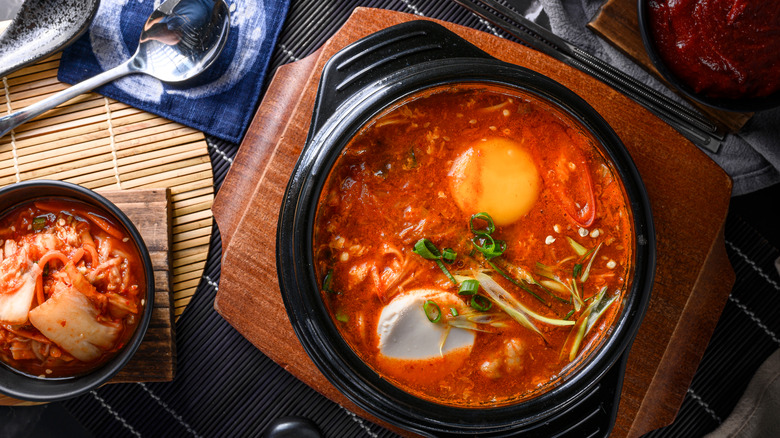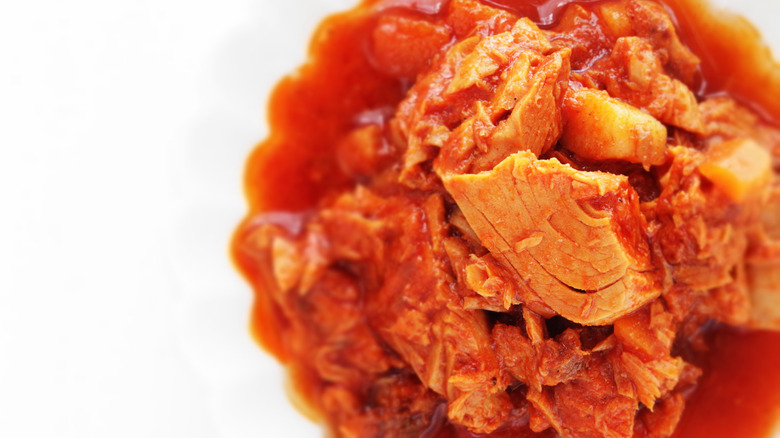The Spicy Canned Tuna To Use For Shortcut Korean Stew
Kimchi jjigae is an iconic Korean stew that's captured the hearts of many chefs. With fans like David Chang, the dish is rapidly getting the recognition it deserves as a comforting meal that relies on umami-rich pantry ingredients, gochujang, fish sauce, and, its star ingredient, kimchi.
Even so, every stew is welcome to a few shortcut methods that can help speed up and relax the cooking process. For jjigae, this hack comes in the form of canned kimchi tuna, a spicy fish product marinated in kimchi sauce that adds a boost of protein and flavor with little fuss. Many jjigae recipes call for a blend of tofu and pork for their protein, but for those looking to go for added convenience, this aromatic tinned tuna will fit the bill.
Though it may seem an unfamiliar pantry item for those who don't frequent Asian markets, canned kimchi tuna is a common lunch item for Koreans, who often combine canned tuna, kimchi, and rice for a fast meal. So where can you get your hands on your own can, and how should you go about adding it to your jjigae recipe?
A powerhouse pantry staple to whip up a traditional Korean dish
You have a number of brands to choose from for your canned kimchi tuna adventure, and most are available in Asian markets or online. One popular option is Dongwon Tuna in Kimchi Sauce, available on Amazon, and O'Food Tuna with Kimchi, which has a descriptor of "mild and crunchy," slapped on the can. Note that there are some Korean canned tuna brands that specify tuna in gochujang sauce, which is the spicy, fermented sauce used in Korean cooking. It, too, could work in jjigae, but it'll make the dish spicier rather than tangy.
To properly incorporate this pantry item into your soup, start with a recipe that would have called for a blend of canned tuna and tofu. You can replace the canned tuna with the kimchi version 1:1, and even sub in an extra can for the tofu if you've run out of that item. In most jjigae recipes that use tuna, it's added at the very end of the cooking stage, as it doesn't need to be cooked like the other items. Taste after adding, as the excess kimchi flavoring may affect the seasoning of the dish and need some correcting. Other than that, this delicious tuna hack is as simple as it gets. If you have the opportunity to make this dish yourself, you'll see why.

